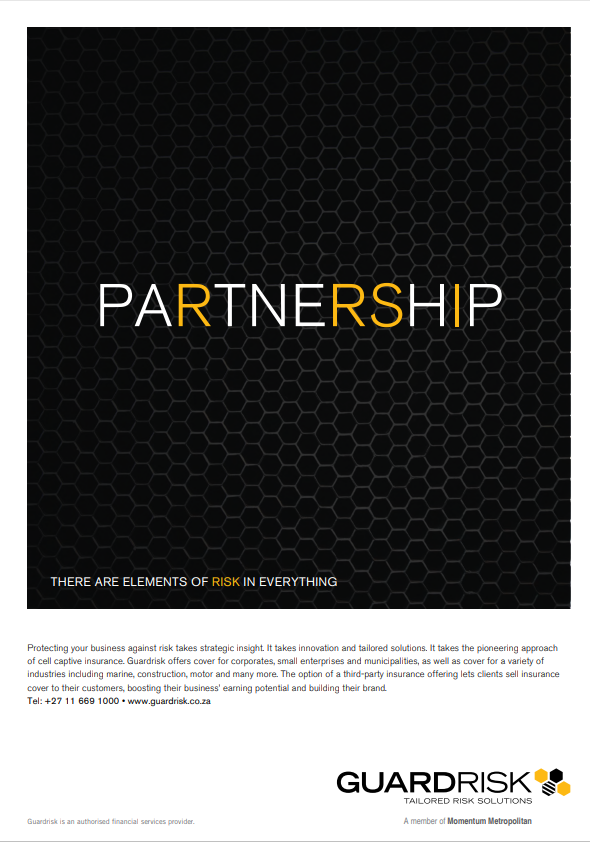Philip Cronje, Business Unit Manager of Aon South Africa’s Sports, Recreation and Entertainment Division.
What happens when sponsored celebs behave badly?
In a world obsessed with the lifestyles of the rich and famous, big brands are increasingly signing up with famous A-list celebrities, athletes, musicians and TV personalities to endorse their products and services. It’s a highly effective and popular way to attract attention to a brand and its products through the shared positive associations.

But it is also high risk if things go awry.
While many such endorsements work very effectively, history has also shown that when a celebrity falls from grace in a spectacularly public fashion, it can cause significant reputational damage and have serious financial repercussions for the sponsoring brand if not managed swiftly and strategically.
Death, disability and disgrace insurance is a way that sponsoring companies can protect their brand financially when a sponsored celebrity behaves inappropriately and the brand decides to distance their association with them. Additionally, this cover also protects the sponsor if tragedy strikes and the celeb endorser is unable to continue as the face of a campaign, either through death or disability.
In today’s digitally inclined society, public scandals are so much more prevalent on social media and the internet than ever before. And while death and disgrace insurance is not a ‘moral barometer’ of behaviour, it is a reflection of society’s tolerance of it, especially when that tolerance is linked to your brand.
It’s also important to note that ‘disgrace’ is a very subjective matter, and that certain brands may have a higher tolerance to certain indiscretions than others. For example, Gillette remained on as a sponsor of Tiger Woods after the revelations about a string of extramarital affairs. But in instances where the actions of a celebrity are in direct opposition to the ethos and values of the sponsoring brand, sponsors have reacted by publicly and swiftly withdrawing their support. Brands can even derive positive public sentiment when such action is seen to be taking a stance against an important societal issue.
Using sports stars, musicians, actors and celebrities to promote a brand typically incurs huge costs in terms of branding, advertising and marketing campaigns, media and advertising placements, product labelling and so on, all of which would need to be recalled at huge cost and loss if a celebrity sponsorship is hastily withdrawn. Companies are increasingly turning to insurance and risk management to mitigate against these risks and aligning their insurance cover and their contracts with the celebrity endorser accordingly.
The risks and impact include:
Removal of advertising: Companies may be required to remove advertising materials featuring the public figure, resulting in a loss of time and money. In many instances the sponsor will need to recreate its entire advertising campaign, even the products on shelves if the packaging or merchandise bears their image or endorsement, costing millions in lost production, merchandise and packaging costs, as well as any remedial action required to protect their reputation.
Loss of income: If a public figure’s death or disgrace results in negative public relations, the company may lose income as a result of decreased sales or the company’s investor relations being affected negatively.
Damage to brand reputation: The negative publicity associated with a public figure’s death or disgrace can fundamentally damage a brand’s reputation and adversely affect customer trust. The primary reputational risk is that the inappropriate behaviour is seen by the public as a direct reflection of the brand’s values and sentiments. This is why such cases demand swift and strategic action on the part of the brand to firstly distance themselves from the unsavoury behaviour, but also to publicly make a statement about what their values are and limit further damage by association.
Difficulty finding a replacement: Finding a suitable replacement for a public figure who is no longer available can be time-consuming, challenging and costly, often delaying the marketing campaign.
Death and Disgrace insurance is available from various insurance carriers and structured to cover certain costs, from the removal of all advertising material and creating an entirely new campaign, through to the product recall of any items bearing the celebrity’s name or image, as well as the recreation of any packaging and merchandising that needs to be removed and replaced. It is not possible however to insure against a drop in sales revenue as a result of the death or disgrace of a celebrity, because it is very challenging to accurately quantify the direct monetary loss associated with an endorsement.
When contemplating a celebrity endorsement, it’s highly advisable for brand owners to consult with a specialist risk advisor who can guide them through the process of assessing all the potential risks. This involves analysing every conceivable “what if” scenario, assessing the financial and reputational ramifications and the costs of any required remedial actions, assessing what risks can be avoided by transferring them contractually to the sponsored individual, which ones should be insured and which ones should be retained.
Demand for death, disability and disgrace cover has increased, driven by recent high-profile cases as well as the fact that organisations are becoming more sensitive about managing their reputations in the age of the internet and social media. Properly scoped insurance covers guided by the professional advice and risk mitigation skills of an experienced broker are essential to ensure that when celebrities are caught doing something they probably shouldn’t, sponsoring brands can recover and return to normal business operations and building their invaluable reputation, as soon as possible.


